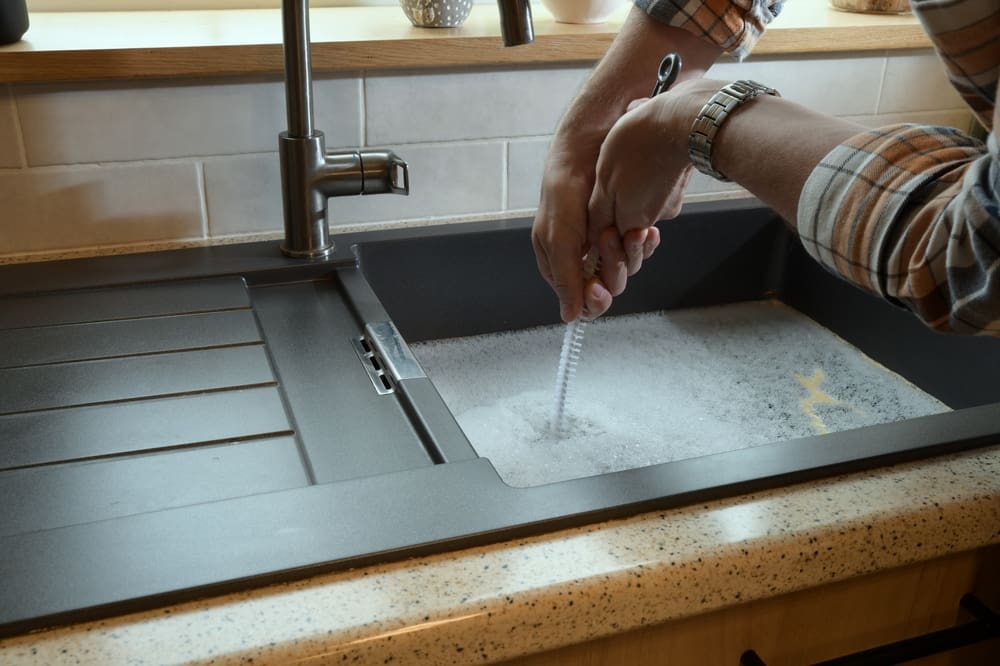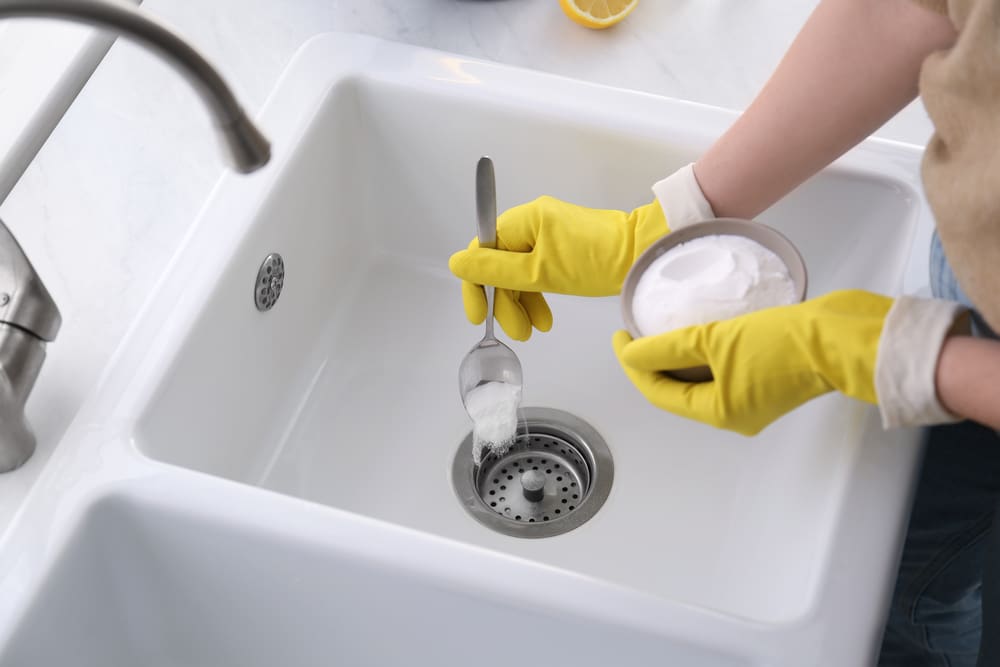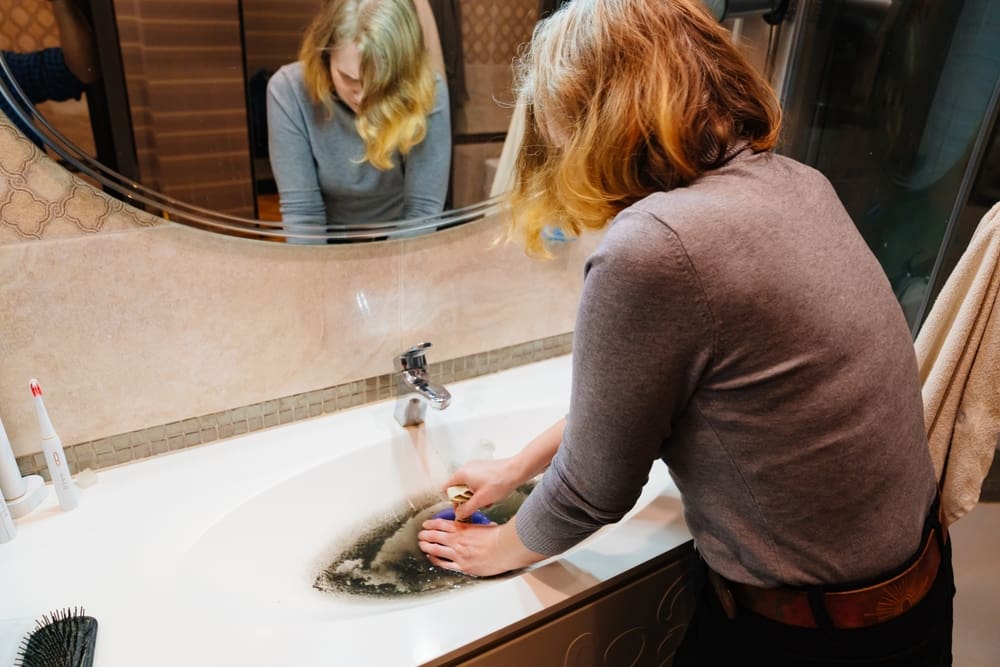
Your daily routine relies on your drains, but you may not realize their importance until they’re clogged. Think about it—when you shower, brush your teeth, or wash dishes, you need a drain. If the drains are clogged in your home, it’s tough to get anything done. If you do get anything done, you’ll leave standing water over the drain—which also causes problems.
Losing your routine for one day can be annoying, but losing it for weeks or more can throw your life into imbalance. Thankfully, it’s easy to get back on track. In the following blog, BEST’s plumbing experts discuss some simple, effective methods for how to clear a clogged drain.
Why It’s Important to Clear Clogs Quickly
Sure, slow drains are annoying, but are they really that bad? Well, they can be—but only if they remain unaddressed over a long period. This is why you should always clear clogs as soon as you can. The negative effects of a clogged drain can vary, but here are some of the most common issues you’ll face:
- Water Damage: A clogged drain might become backed up, causing it to overflow. If you aren’t present while a drain overflows, or if you accidentally leave a faucet on, then your bathroom or kitchen may be flooded. This excess water can cause lasting damage to your tile, walls, and ceilings. If left alone, water damage can lead to mold and mildew growth.
- Plumbing Issues: Your pipes may be corroded by stagnant water, and if you use too many drain unclogging chemicals, leaks can develop in your plumbing system. It’s important to take great care when addressing clogs with chemicals.
- Foul Odors: Bad smells typically stay inside your pipes, but they will drift into your bathroom or kitchen when a clog develops. These rotting, musty odors can easily ruin a meal or force you to plug your nose while brushing your teeth.
Tools That Might be Useful for Unclogging Drains
Before you tackle a clog, you need to be adequately prepared. Not just anything will do the job. Here’s what to use to unclog a drain:
- A ⅜ to ¼-inch drain snake that is about 20 feet long.
- A dependable plunger.
- A bucket to place under your drain.
- Rubber gloves and goggles.
- A wrench.
- A flashlight. Phone flashlights are fine, but a high-power model will be much more helpful.
Methods to Clear a Clogged Drain
The best way to unclog a drain depends on the severity and nature of the clog, so we won’t stop at one strategy. Let’s look at some common methods for how to unclog a drain—all of these methods should help with sink and tub drains alike.
1) Use Baking Soda for Drain Unclogging
Baking soda can be mixed with simple ingredients to make a homemade drain unclogging solution. Here are a couple of quick recipes to try out:
Baking Soda + Vinegar: Pour a half cup of baking soda and a half cup of white vinegar into your drain. Pour a few cups of hot water afterward, and let the mixture sit for about an hour.
Baking Soda + Lemon Juice: Take one cup of baking soda, three cups of boiling water, and one or two cups of lemon juice. Mix them together and carefully pour the concoction down your drain.

2) Use Simple Drain Unclogging Tools
Plastic hair removal tools are a cost-effective way to unclog your drain, often costing $5 or less. For drains full of hair, this may be the best way to unclog a drain. They are equipped with barbs designed to latch onto long strands.
You can also use a wire coat hanger if you’re feeling crafty. Here’s what you’ll need to do:
- Straighten and lengthen the hanger so that the hook is at the end.
- Push the wire down the drain.
- Once you feel hair or other material on the hook, slowly pull it out of the drain. Repeat this movement and let hot water flow into the drain when finished.
3) Use a Plunger
Sometimes, you can’t beat the classics. Many times the best strategy for clearing a clogged drain is using a sink plunger (this is different from a toilet plunger). Unfortunately, you can’t just place a plunger over the drain and pull. You’ll need to make some quick preparations.
For a typical bathroom sink, you’ll need to remove the drain stopper and plug the overflow drain hole. You can remove a drain stopper by first removing the stopper lever nut, which is typically behind your sink’s pipes. Before you plunge, put the lever nut back in place.
To unclog a double-basin sink, you’ll need to prepare by plugging one of the drains with a wet rag.
Tub drains will need their overflow drain cover removed and the overflow hole plugged. You can use a wet rag for this. Once your drain is prepped, it’s time to get to work. You’ll need a few inches of water standing in the sink before you start plunging. Once you’re ready to plunge, place the plunger over the drain and repeatedly move it up and down. You will need to run hot water down the drain after you are done.
4) Dismantle the P Trap
Taking apart the P trap is a viable option for sinks, but it is not as common for tubs, since you need access from below. Place a bucket beneath the P trap before dismantling it, then loosen the nuts on the trap. Once the nuts are removed, you can go ahead and remove the P trap’s elbow. Once the elbow is removed, you can clean out debris and hair. Then replace the P trap and flush hot water down the drain.
5) Use a Drain Snake
A manual drain snake is great for dislodging tougher clogs, and they are generally better for your plumbing than motorized snakes.
When using a drain snake, you’ll want to pull out about one foot of the snake and tighten it in place with its screw. Then drive the snake as far into your drain as possible. If you’re unclogging a tub, drive the snake into the overflow drain hole. You will want to rotate the snake’s coil/drum and let it spin before untightening it and releasing more of the snake. Insert more of the snake until you feel strong resistance, re-tighten the snake, and start rotating again. Then you’ll untighten and rotate once more. Repeat this process until you can push in the snake without resistance. Turn the coil/drum counterclockwise to retract the snake.
Your drain is unclogged if you can run hot water for five minutes and meet no resistance.
6) Use Dish Soap
Dish soap and hot water can break down grease clogs and help move clogged material through your pipes. Only pour about one or two ounces of dish soap into your drain. Then slowly run hot water into your drain.
7) Flush Boiling Water Through Your Drain
Boiling water can break up oil- and fat-based clogs. Slowly pour this water down your drain and run hot water for several minutes afterward. It is important to note that you should avoid this option if you have PVC plumbing. PVC pipes may melt if exposed to boiling temperatures.

Preventing Clogged Drains: What You Need to Know
Unclogging a drain can be annoying and time-consuming. It’s best to avoid the process altogether. Here are some best practices to keep in mind:
- Don’t flush the non-flushable: If a product says it shouldn’t be flushed, you should take its word. This applies to “flushable” baby wipes, food waste, and sanitary products.
- Avoid draining grease: Grease is a leading cause of clogs. Try pouring your grease into a cup or container and throwing it in the garbage later.
- Use a strainer: Drain strainers will keep unwanted items out of your drains. This includes hair, food waste, and dirt.
- Contact a drain cleaning service for regular service: A professional drain cleaning/plumbing service can consistently clear your pipes, preventing future clogs and damage.
Common Mistakes to Avoid When Unclogging Drains
DIY unclogging doesn’t always go smoothly. Using tools and chemicals improperly can sometimes do more harm than good. Here are some mistakes you’ll want to avoid in the drain unclogging process:
- Dumping too many chemicals down your drain.
- Misusing a drain snake.
- Shoving improper tools like hoses and screwdrivers down your drain.
- Using a toilet plunger instead of a sink plunger.
- Tackling a tough issue that can only be solved by drain repair professionals.
Know When To Call a Professional
If your DIY methods don’t work out or you’re worried about damaging pipes, the safest option is to contact a professional plumbing service. Certified drain cleaners can quickly and safely break up a clog. Though this will cost money, it is often well worth the price. Sometimes, the issue is beyond DIY means, and you might not even know it. A sewer line issue or blocked vents, for example, can only be serviced by a professional team.
Call Us for Any Plumbing Issues in Las Vegas
BEST Air Conditioning Plumbing Repair is your trusted partner for drain unclogging and other plumbing services in Las Vegas. In 2019, we earned the Best in Las Vegas award for our exemplary service and commitment to home and business owners like you.
If a clog is disrupting your daily routine, let our certified experts give you a hand. We will quickly and safely unclog your drain, walking you through the process if desired. After our work is done, we will offer helpful prevention tips to help you avoid future issues.
You deserve the best, so contact BEST Air Conditioning Plumbing Repair today. We’d love to help with your plumbing, leak detection, and kitchen/bathroom needs.
Clogged Drain FAQ
1) Is it safe to use chemical drain cleaners?
Chemical drain cleaners should be used in moderation. They can sometimes corrode your pipes, causing more harm than good.
2) How often should I clean my drains to avoid clogs?
We recommend cleaning your drains at least once a year.
3) What’s the best way to remove a hair clog from a shower drain?
Drain snakes, plungers, and plastic hair removal tools are all great options for unclogging a shower drain.
4) What is the easiest way to unclog a drain?
Calling a professional drain cleaning service is the simplest method for how to clear a clogged drain.
5) Can clogged drains damage my plumbing system over time?
Yes, a serious clog can lead to corrosion, backups, and foul odors in your plumbing system.

